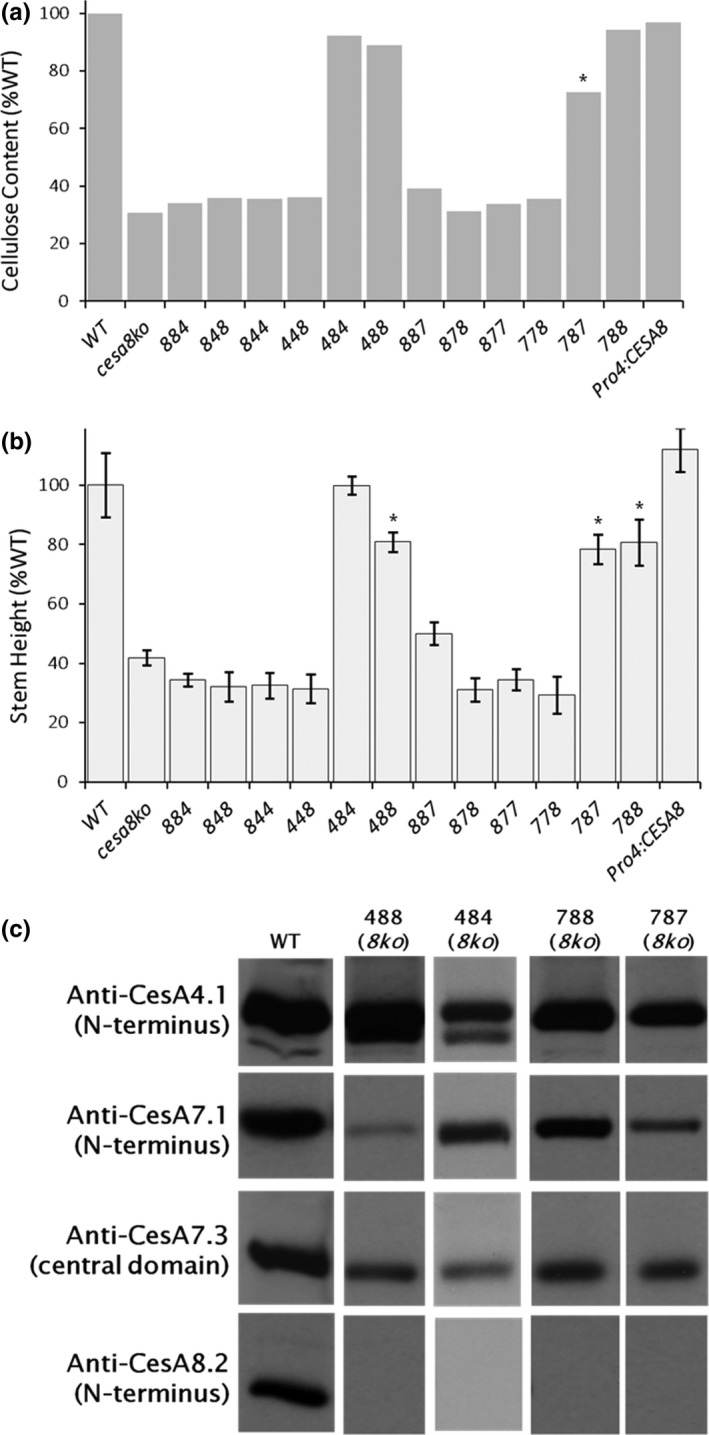Figure 2.

cesa8ko is rescued by four chimeric constructs containing the CESA8 central domain. Among 12 chimeric CESAs tested, CESA484, CESA488, CESA787, and CESA788 were able to rescue the cesa8ko (irx1‐5) phenotype. Phenotypes were also rescued by the positive control (Pro4:CESA8, CESA8 driven by a CESA4 native promoter). (a) Crystalline cellulose content of each genotype as a percent of wild type (WT). Error bars are standard deviations (STD) from n = 5 technical replicates of a pooled sample composed of primary inflorescence stems harvested from 8–20 plants per line. (b) Stem height of each genotype. STD error bars derive from n = 8–25 stems from individuals from a single transgenic line. In (a) and (b), asterisks indicate partially rescued lines (p < 0.01 as determined by nonparametric Mann–Whitney test between values for the wild type and the transformed line). (c) Immunoblot analysis characterizing domain swap lines that rescued the mutant phenotype. Anti‐CESA4.1 recognizes endogenous CESA4 in all lines and the 4 kDa smaller CESA488 and CESA484. Both anti‐CESA7.1 and anti‐CESA7.3 recognize endogenous CESA7, but CESA788 and CESA787 are too similar in molecular weight to CESA7 to be separated from the native protein. In all transgenic rescue lines, no signal from anti‐CESA8.2 was observed, confirming the cesa8ko genetic background
